Cédric PERNETTE
The Dead of the Kunstkamera in St. Petersburg : "Corpses in the Museum" or
"Museum Corpse" ?
Legitimate ethical and legal concerns are leading a growing number of museums around the world to remove corpses (or their fragments) from their exhibition spaces. Yet human remains are sometimes the core of a museum’s identity, and as such they make it difficult to reorient the museum’s policy. This is the case in Russia’s oldest museum, the Kunstkamera. By placing important anatomical and teratological collections (mainly acquired from the Dutchman Frederik Ruysch) at the centre of the collections and exhibition spaces, Peter I unconsciously diverted his museum from the universal didactic objectives he had set for it : in the eyes of the public, the Kunstkamera unwillingly remains to this day a "museum of monsters and mutants". I propose here a reflection on some misunderstandings that have marred the acquisition and musealisation of the Kunstkamera’s corpses, leading to a real
curse for the museum’s identity.
Anaelle LAHAEYE
A Corpse on the Canvas : some Thoughts about the Study of the Motif in Art History
Studies about cadavers is rare in art history. Pascale Dubus and Sylvia Girel stand out by approaching this subject through their large studies : the first in a theoretical approach devoted to the Renaissance and the second devoted, through typology, to the end of the 20th century. Following these studies and supported by the French painting of the 19th century, this article aims to propose novel ways of thinking about the study of corpses. We describe methodologies and approaches that are little or never used until now, in order to highlight their input in the understanding of the motif. Quantitative studies, interdisciplinary comparisons and aesthetic contextualization prove to be valuable keys in deciphering certain iconographies and their evolutions.
Daria SINICHKINA
Post mortem Portraits of Russian Writers and Poets, from Memorial Objects to Pieces
of Art
In the first half of the 19th century, deathbed portraits of Russian writers were circulated exclusively among family and friends. The government was hostile to public grieving of famous people other than the emperor and his family members. The situation changed in the 1860s, both regarding deathbed portraits of the emperor and those of writers, before peaking dramatically with Dostoyevsky’s funeral in 1881. Post mortem portraits became a significant element of the manufacture of writers’ cults and of their cultural institutionalization. Be it a drawing, a painting or a photograph, they became both commemorative tokens and pieces of art that sublimated the poet’s death, turning it into the starting point of any effort at writing their biographies. With the politicization of death under the Bolshevik regime, the writer’s corpse became the object of official iconography and an integral part of the codified funeral rites of the period. However, in the private sphere, artists and photographers offered a personal vision of the corpses of writers and poets. It served as a visual echo of the reception by contemporaries of the deceased as well as of his literary legacy. This was the case for Sergei Esenin, photographed by Moisei Nappelbaum a few hours after his suicide in December 1925.
Claire DELAUNAY
When the Dead Body Questions the Living
About Some Visions of Corpses in Tolstoy’s and Dostoevsky’s Works
While many characters find death in the works of Tolstoy as of Dostoevsky, whether by illness, murder or suicide, corpses are not necessarily the object of a systematic description or a special development. Without aiming for an exhaustive study of the treatment of the dead body by these two authors, this article proposes to examine a few cases in which the corpse questions the living who are confronted with its vision. Through the intermediary of the characters from the diegetic universe through whom the text delivers this vision, it is also the reader himself that these corpses come to question. From a selection of notorious examples taken from Tolstoy’s work, compared with the probably most famous dostoyevskian corpse, the aim will be to highlight the different devices used to mediate the representation of the dead body and the functions of the corpse in the text at different levels.
Jean-Philippe JACCARD
Undying corpses
(Kharms and Dostoyevsky)
There are good reasons to think that the corpse crawling in Daniil Kharms’ short story The Old Woman (1939) is none other than Aliona Ivanovna’s, and that the cadaver of Dostoyevsky’s undying pawnbroker has migrated from Raskolnikov’s Petersburg dream (Crime and Punishment) to the narrator-writer’s Leningrad communal apartment. More vivid, at least at first sight, than the corpse of Christ represented by Holbein that terrifies Rogozhin’s visitors in The Idiot, she brings with her to a Russia in the grip of the Grand Inquisitor the notion, very effective in this context, of “punishment without crime”. But above all, she brings with her all the “unsolved” questions posed by Dostoyevsky’s work as a whole.
Jana KANTOŘIKOVA
The Death of the Black and White Venus.
The Imagination of the Crucified Woman in Fine Arts and Literature between (Central) Europe and the Russian World
This article explores the representations of the female crucifixion that have proliferated since the second half of the nineteenth century. The symbolic superposition with the Corpus Christi as well as the narrative reference to the Passion of Christ endow the image of the crucified woman with a particular semantic framework that opens it to experimental (self)projections. The analysis, based on visual and literary corpora from the French, Czech and Russian languages, points out the milestones in the evolution of this subversive motif from male-authored portraits of female martyrs to female-authored “self-portraits”. By focusing on the turn of the century and by making the question of the “racial” origin of the crucified women relevant, our analysis shows that the way of representing violence on tormented bodies is far from being universal.
Laetitia Le GUAYBRANCOVAN
Taming Death : The Corpse and its Metamorphoses in the Last Works of Dmitri
Shostakovich (1906-1975).
In poor health for the last ten years of his life, haunted by the thought of death, Dmitri D. Shostakovich (1906-1975) drew from the idea of death inspiration for several major works, including the singular Symphony No. 14, Op. 135, for soprano, bass and orchestra premiered in 1969, and the Suite on poems by Michelangelo, op. 145, for baritone and piano. Two works which, five years apart, respond to each other and show an evolution in the composer’s relationship to death. A rare occurrence in the history of Russian and Soviet vocal music, Symphony No. 14 proposes a meditation on individual, not collective, death (holocaust, war) by setting texts by Apollinaire and Rilke to music. Between raw realism and sublimation, two decomposing corpses are the site, if not of a reconciliation between the composer and his impending end, at least of an appeasement that is expressed five years later in the Suite on poems by Michelangelo.
Laetitia DECOURT
Ironic readings of the romantic Corpse : gothic, magnetic, satirical
This paper proposes to outline some of the narrative and poetic possibilities attached to a very specific embodiment of the figure of the corpse in the Romantic literature of the 1820-1840s. The representation of the living dead allows authors Vladimir Odoevsky and Alexander Bestuzhev-Marlinsky to unveil what constitutes a characteristically romantic trait : their ironic ambiguity. It may be related to a rewriting of the Gothic heritage, or an interpretation of the phenomenon of the undead in the light of magnetism theories, or a satirical point of view on society’s faults.
Cécile ROUSSELET
From White Shroud to Rotting Carcass : The Exhibition of the Corpse as a Testimony of Aesthetic Mutations and Political Upheavals in Yiddish Literature of the Years 1910-1930
The dead body is considered impure in Jewish traditional culture, and therefore quickly buried and hidden from view. Nevertheless, the aesthetic mutations of the 1910s change their representation. Literary modernity seized on other models : post-romanticism, fin de siècle aesthetics or Berlin expressionism. Corpses become efficient elements to redefine both aesthetic and political issues. The bodies are sacrificed, torn apart by pogroms, but also aestheticized, carnivalesque, rotten or calling for an eschatological transfiguration. They compete in a complex reconfiguration of a society in the grip of violence. In that respect, the examination of corpses in Yiddish prose offers a reflection on the individual caught up in violence, the place of Yiddish literature in relation to European models, and a questioning of the powers of literature at the dawn of the 20th century.
Tatiana DROBOT
Metaphors and Biopolitics of the Living Corpse in Nikolai Fedorov’s and Alexandr
Bogdnanov’s Utopias
After a quick introduction on both differences in vision and common assumptions of Nikolai Fedorov and Alexandr Bogdanov about death, we discuss the way they redefine moral duties of man towards life and death. The analysis focuses on three main themes that shape the ways Bogdanov and Fedorov theorize world transformation. First, the dichotomy between living life and dead life leads Bogdanov to the vampire, fictional character, or symbol of ideological and moral decay. Second, on the contrary, Fedorov transfigures the corpse and aestheticizes death by redefining man as a museographer, curator, and restorer of gone life. We eventually see, in life force exchanges and regeneration, two different views of control and mutual assistance in life and death, that tend towards erasing the corpse.
Bella OSTROMOOUKHOVA
« A world without sex and death ».
Corpses in children books in contemporary Russia
While death has historically always been present in narratives designed for children, corpses are mostly absent : a parent of a fairy tale character dies without a trace and it is precisely his absence that is significant for the story ; the young hero who died for his Soviet homeland is transformed into a monument. Moreover, there is a recent tendency in Russia to avoid the subject of death in books for young readers, on the pretext that this is not a subject suitable for children. However, independent publishing houses, specializing in books about what are considered “difficult” ; subjects, are trying to reverse this trend by publishing translations of foreign authors. While some books present death in a metaphorical way, as an almost joyful event, others face the corpse in its most concrete, physiological form, as do some Scandinavian or German authors, in order to take the young reader beyond fear or disgust. These books are unequally welcomed by the parents of the readers, whose comments sometimes reflect
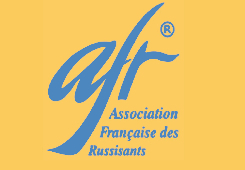
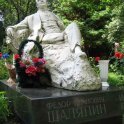
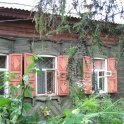








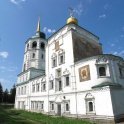
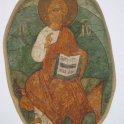


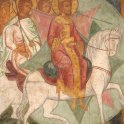


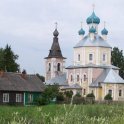




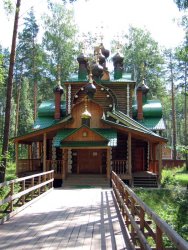
 Sommaire
Sommaire